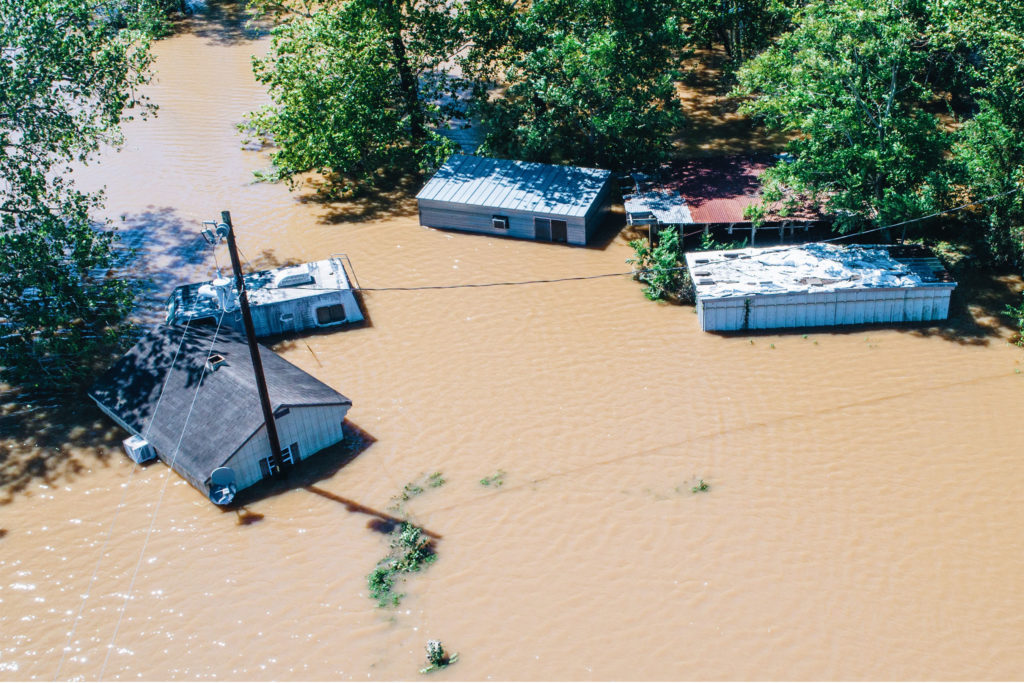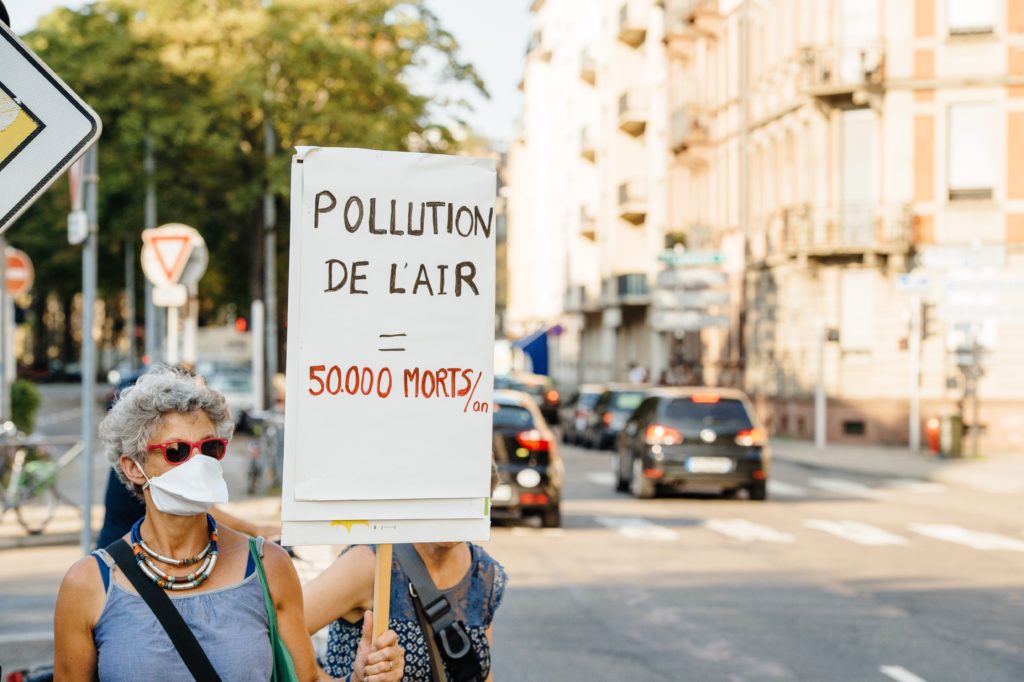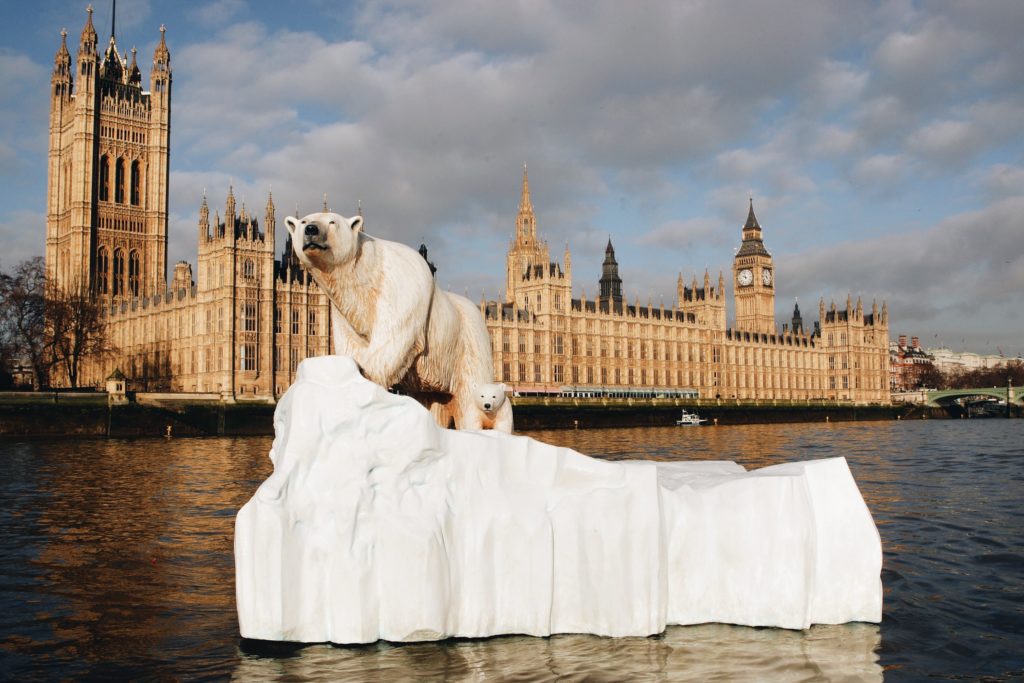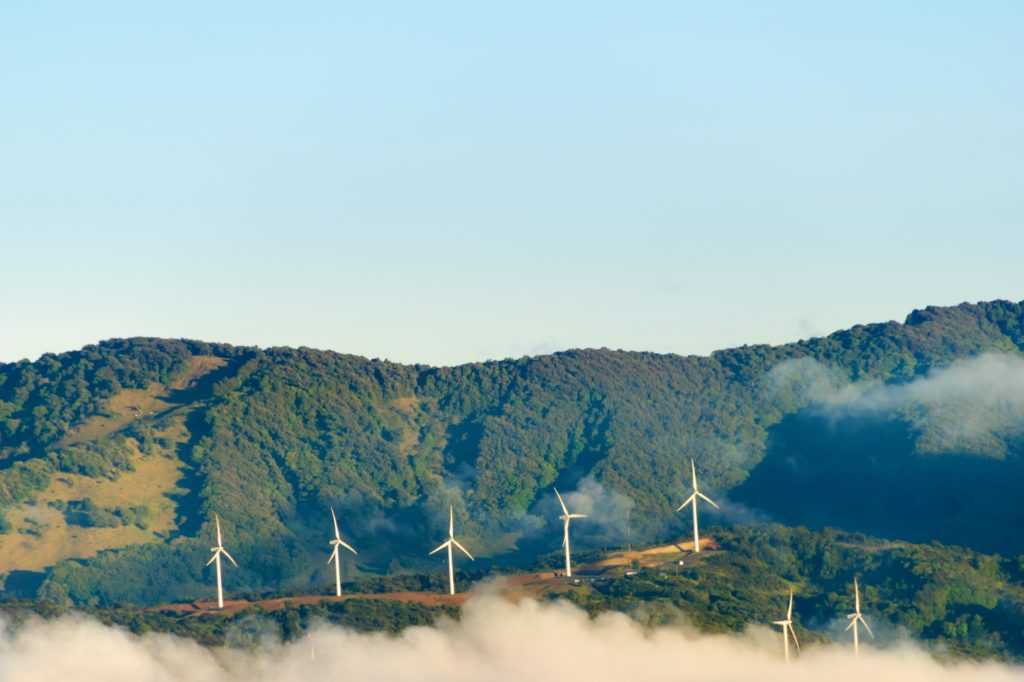As of January 1, we are one year into the “decade of action” — our final chance to achieve the UN’s Sustainable Development Goals (SDGs) before the 2030 deadline. Failing to meet this deadline could cause an irreversible and devastating chain of climate events.
UN Climate Change Deputy Executive Secretary Ovais Sarmad referred to 2020 as a “critical year” in climate mitigation. He also highlighted that since the signing of the Paris Climate Agreement, climate change has become a “full-blown” emergency. Due to the cumulative nature of global warming, even an immediate halt in emissions would not result in an immediate reversal of the destructive trend.
A UNEP report from December confirmed that the world is currently on track for 3 degrees warming by the end of the century. This is twice the “optimum” maximum amount set out in the Paris Agreement. With just 10 years left to limit the full, catastrophic impact of climate change, 2020 represented a key opportunity for the world’s governments to take decisive and effective action.
The Decade of Action
As people around the world struggled with the ongoing COVID-19 pandemic, which claimed 1.81 million lives as of Dec. 31, 2020, many also experienced the increasingly significant effects of climate change. 2020 saw severe wildfires in Australia and the U.S., and flooding in China, India, and Pakistan. There was a record-breaking hurricane season in the Atlantic. Crops failed. And devastating droughts and water shortages occurred in nearly every corner of the world.
Much of the planet has now felt or seen the impact of climate change in one form or another, but it also highlights the vast wealth disparities around the world. The countries and communities that have felt the greatest impact—and are most vulnerable to future effects of climate change—are the ones already experiencing poverty.
One UN report highlighted these ongoing struggles with changing temperature and extreme weather as key parts of the changing dialogue around global warming. As these events impact a growing number of people, the effects have become harder for the world to ignore. As such, they have been met with increasingly ambitious plans for mitigation from local and national governments.
Climate Action Tracker — an independent scientific analysis of government action compared to the Paris Agreement — indicated that new statements of intent to reduce national emissions from China and the U.S., in particular, could help bring global climate targets within reach. But only if they are carried out effectively and rapidly.
The “Big Five” countries, which are permanent members of the United Nations Security Council — the U.S., China, Russia, France, and the UK — are among the best placed for climate mitigation. The U.S. China, and the Russian Federation are also three of the top four leading emitters of CO2. As such, they require the most urgent infrastructural overhaul.
If we are to successfully mitigate the effects of climate change — and every miniscule amount of warming prevented has the potential to save lives — bold, decisive action is needed, and now. Here is an overview of what the “Big Five” have planned for climate action in 2021. Will it be enough?

The U.S.
One of the most significant changes promised by U.S. President-elect Joe Biden and Vice President-elect Kamala Harris is their pledge to rejoin the Paris Agreement. Biden’s government will hold a climate summit in early 2021, within 100 days of taking office. He aims to rejoin the Agreement on the first day of his presidency.
Biden’s climate plan, in general, is far more moderate than the Green New Deal. A Congressional proposal that aims to fully address the combination of climate change and economic inequality. However, it still represents the most progressive, hands-on climate strategy ever attempted in the U.S. It aims to achieve a 100-percent clean energy economy and net-zero emissions no later than 2050. According to a recent Princeton University report, there are several realistic paths for the U.S. to achieve net-zero in this time — but only as long as the government invests in sustainable infrastructure as soon as possible.
According to Biden’s climate plan, the government will also make a “historic investment” in clean energy and environmental justice. Overall, this new strategy could help shape global energy markets and climate policy moving into the new year. Biden’s climate plan also details the full integration of climate change into all U.S. foreign policy, security, and trade strategies. Including the use of its “economic leverage” — and the power of example — to rally other nations.
In the absence of decisive federal action during Trump’s term, U.S. states and regional governments have addressed climate change at a local level. According to the Center for Climate and Energy Solutions (C2ES)’ state-by-state guide to climate policy, 23 states plus the district of Columbia have now adopted specific greenhouse gas reduction targets.
In 2018, California announced its target of net-zero carbon emissions by 2045. Additionally, the state will require all new passenger vehicles to be emissions-free by 2035. This alone could reduce Californian greenhouse gas emissions (GHG) by 35 percent.
Last year, Vermont-enacted statutory targets reducing GHG emissions 26 percent below 2005 levels by 2025. It also aims to reach 40 percent below 1990 levels by 2030, and 80 percent below 1990 levels by 2050. Washington state also enacted new targets in 2020. It aims to reduce emissions to at least 25 percent below 1990 levels by the year 2035. But the state’s Department of Ecology recommends a more ambitious target of 40 percent by 2035.
Overall, Climate Action Tracker rated U.S. performance in the year 2019-2020 as “critically” insufficient. The report specifically cited President Trump’s repeated relaxation of environmental regulations. There has been a significant reduction in certain emissions due to the COVID-19 pandemic. But an overall increase in emissions caused by the current administration will more than counteract this.
According to the New York Times, Trump has now reversed 27 environmental rules and regulations related to air pollution and emissions alone. These include Obama-era limitations on power plants’ mercury and CO2 emissions. They also include the removal or limitation of protections for wetlands, reserves, and certain wildlife. Including those still in progress, Trump will have rolled back over 100 environmental rules before the end of his presidency.

China
Currently, China is the leading producer of clean energy-based technologies — from electric cars to solar panels. In September, President Xi Jinping announced the ambitious goal of peak emissions by 2030 and carbon neutrality by 2060. Until now, The country has failed to commit to long-term emissions-based targets. But while the surprise announcement was welcomed, how it will be achieved remains to be seen.
China is currently the leading emitter of CO2 emissions and has been since 2006, when it surpassed the U.S. This is due to both its large population and fast-growing economy. China’s commitment to carbon neutrality lacks detailed suggestions on how these targets will actually be achieved. Particularly given its current status as a leading emitter.
The current state of affairs is not promising. China contributes around 28 percent of the world’s human-caused CO2 emissions (followed closely by the U.S.). Climate Action Tracker rates China’s performance in the last year as “highly insufficient,” specifically highlighting national dependence on the coal industry.
According to an analysis by the Asia Society Policy Institute and Climate Analytics, China is set to meet the U.N. climate deadline on time. But, an immediate halt on new coal-fired power plants is essential. An earlier study, published in Nature Communications, found that the country’s emissions could be peaked by 2026 based on existing policies and legislation alone.
In December, speaking in an online summit for the anniversary of the Paris Agreement, Xi announced that China aims to triple wind and solar power capacity to over 1 billion kilowatts. He also announced plans to expand and protect national forests.
While the potential for emissions reduction is promising, there are plenty of legislative gaps that must be filled. Increased investment in low-emissions infrastructure and clean energy projects is essential in moving forward. As is a detailed, long-term plan of action.

Russia
Speaking at the Russian-German Raw Materials Forum, Russia’s deputy prime minister (and former energy minister) Alexander Novak announced plans for Russia to become a “world leader in production and exports of hydrogen” by 2035. The government aims to use vast national fossil fuel resources, nuclear technology, and scientific expertise to achieve this goal.
According to Novak, Russia plans to streamline the production of hydrogen from natural gas using nuclear energy. In addition, it will develop other low-carbon techniques to produce and harvest hydrogen. Novak highlighted efficiency and transportation as key impediments to the widespread use of hydrogen in global energy production, which he aims to overcome.
Currently, Russia has no plans to end its contribution to climate change before the end of the century. It is also still aggressively expanding its production of Arctic gas. This industry contributes both to increasing global temperatures and significant regional habitat and environmental destruction.
Vladimir Chuprov, the campaign director of Greenpeace in Moscow, referred to Russia’s climate plans as “baby steps” in March 2020.
President Vladimir Putin only formally endorsed the Paris Agreement in 2019. Since then, he has done little to align the country with its commitments. In 2020, Russia spent approximately $8.4 billion to prop up the national oil and gas industry when impacted by the pandemic.
Russia’s existing climate plan draft would allow greenhouse gas emissions to continue to rise until 2030. This is in stark contrast with the U.N.’s calls for a rapid reduction in emissions by the same date. Climate Action Tracker described Russia’s efforts as “critically insufficient,” noting that the country “is not on track to meet its modest near-term targets.”

France
Over the last year, France has turned to people power to tackle climate change, COVID-19, and a variety of other pressing issues. Unelected assemblies such as the French citizens’ convention for climate have debated global warming and suggested solutions to the government.
In response, French president Emmanuel Macron pledged an additional €15 billion to tackle climate change. After speaking with a citizen’s group focused on climate change in December, he suggested incorporating climate goals into the national legislation. Theoretically ensuring that they would be addressed by each successive government.
Back in 2019, France committed to reducing fossil fuel usage by 40 percent before 2030. It also committed to becoming carbon neutral by 2050. This plan includes strict emissions restrictions for its last four coal plants, effectively shutting them down starting in 2022. However, accomplishing all of its goals — including broader targets such as a circular economy by 2025 and zero-carbon emissions by 2050 — presents a bigger challenge.
In November, France’s highest administrative court, the Conseil d’Etat, gave the government until February 2020 to prove its commitment to greenhouse gas reduction. The court highlighted the binding nature of Macron’s legislative targets and questioned the feasibility of reaching them. France has missed several milestones already and delayed much of its climate action until next year.
“If the justifications so provided by the government were not satisfactory, the Conseil d’Etat may then consider requiring to take further steps in order to achieve the target of 40% by 2030,” said the court at the time.
Much like the other nations included here, France will require detailed policies, legislative updates, and infrastructure investments in order to keep its sweeping commitments to meeting its emission-reduction targets (and significantly reduce the size of the task left to Macron’s successor).
“Should we do more? Yes,” Macron said in December. “We need to keep moving forward, and that work is even more urgent.”

The UK
Currently, Climate Action Tracker rates the UK as “insufficient,” highlighting the lack of strong commitments to a green recovery from COVID. However, the government did make several significant climate-related announcements in the final weeks of the year.
In late November, Conservative politician and Chancellor of the Exchequer Rishi Sunak announced that climate risk reports could become mandatory for all large companies within the next five years. And December saw Prime Minister Boris Johnson announce a definitive end to the government’s direct support of the overseas fossil fuel-based energy sector.
The UK could also see a complete ban on the sale of new petrol and diesel cars starting in 2030. In addition, local governments are preparing for regional diesel bans and restrictions. The British government finally released its “10-point plan” to go net-zero, also in November. This includes advancing offshore wind generation, environmental protection — and a move away from high-emission vehicles and towards green public transport.
According to the plan, the cumulative effect of the 10 points could reduce UK emissions by 180 million tons of carbon dioxide equivalent between 2023 and 2032 — an amount equal to taking all of today’s cars off the road for approximately two years.
But according to Climate Brief, a UK-based source of climate information and analysis, the UK government is not doing enough to achieve its legally binding commitments to going net-zero. The 10-point plan does represent a significant emissions reduction. But, if executed fully, it would still close just 55 percent of the gap to meet the UK’s climate goals. Falling well short of the government’s net-zero ambitions.
The opposition Labour party has commented that “at best” just £4 billion of its touted £12 billion is new money. This is particularly stark compared to the £100 billion invested in HS2, the upcoming high-speed rail system. In general, the UK’s leading climate experts have urged Johnson to impose policies that back up his ambitious targets. Otherwise, the government’s actions will likely not match its pledges.

Other Notable Climate Policies & Pledges
The “Big Five” countries that form the U.N.’s Security Council were not the only nations to make significant recent changes to their climate policy.
- In the year preceding March 2020, Japan’s greenhouse gas emissions fell 2.7 percent to a record low. Prime Minister Yoshihide Suga recently announced the target of carbon neutrality by 2050, a more definitive goal than previously seen.
- Sweden and Denmark ranked fourth and sixth, respectively, in the 2021 CCPI report (which analyzes and rates 57 countries and the European Union by their climate protection performance). Though again, placing highly is no guarantee of success.
- Canadian Prime Minister Justin Trudeau increased the national carbon tax to reduce overall emissions.
- Working with National Geographic, Climate Action Tracker highlighted several countries as “top of the class” for climate action in 2019. Morocco and Gambia are the only two countries in the world with climate plans consistent with the Paris agreement’s 1.5 degrees warming. Both countries continue to emphasize renewable energies such as solar. Gambia, in particular, is taking decisive action to preserve its forests, mangroves, and savannahs.
- India continues to invest more in renewable energy than in fossil fuels. The country aims to generate 40 percent of its power through renewables by 2030. Its progress is so rapid that an increased target may be necessary.
- Costa Rica aims for 100 percent of its electricity production to be renewable by 2021, and in 2018 it reached 98 percent.
Finally, across all of the top performers, including the EU, investment in renewable energy is crucial. Governments must immediately ensure that climate goals are backed up with decisive legislative and infrastructural action in order to successfully mitigate climate change and avoid greenwashing.


